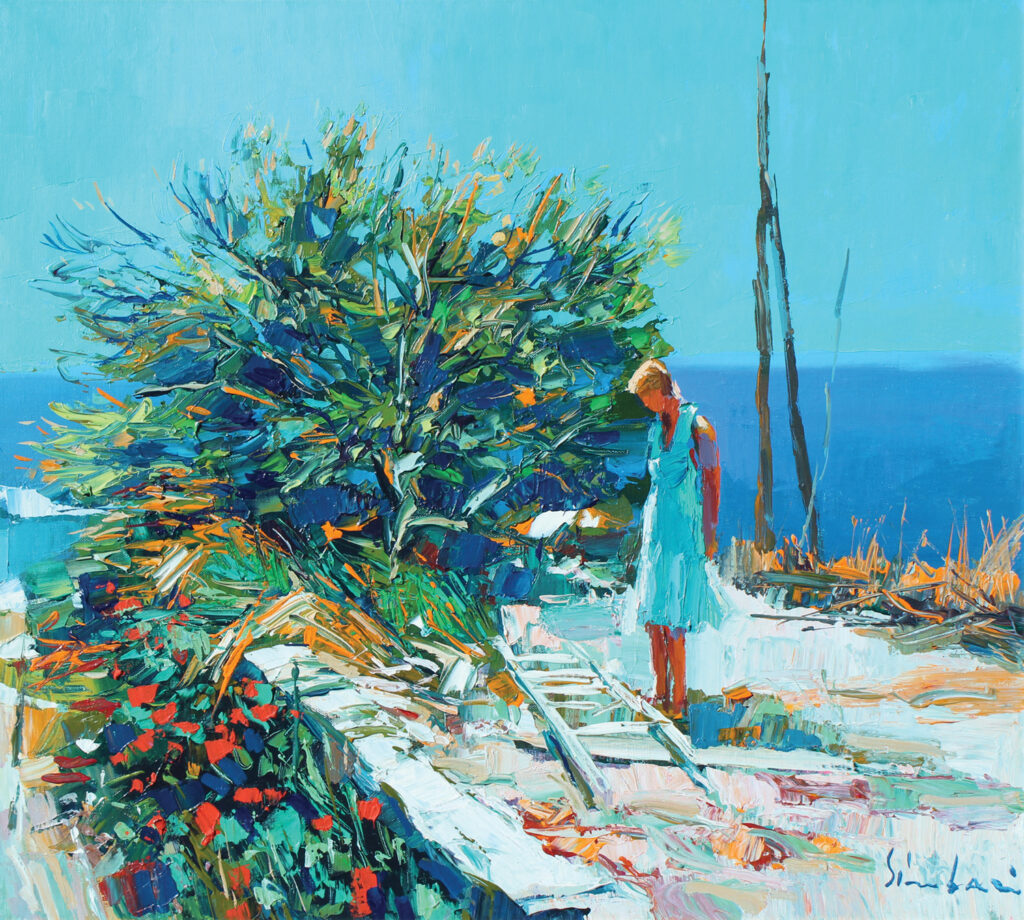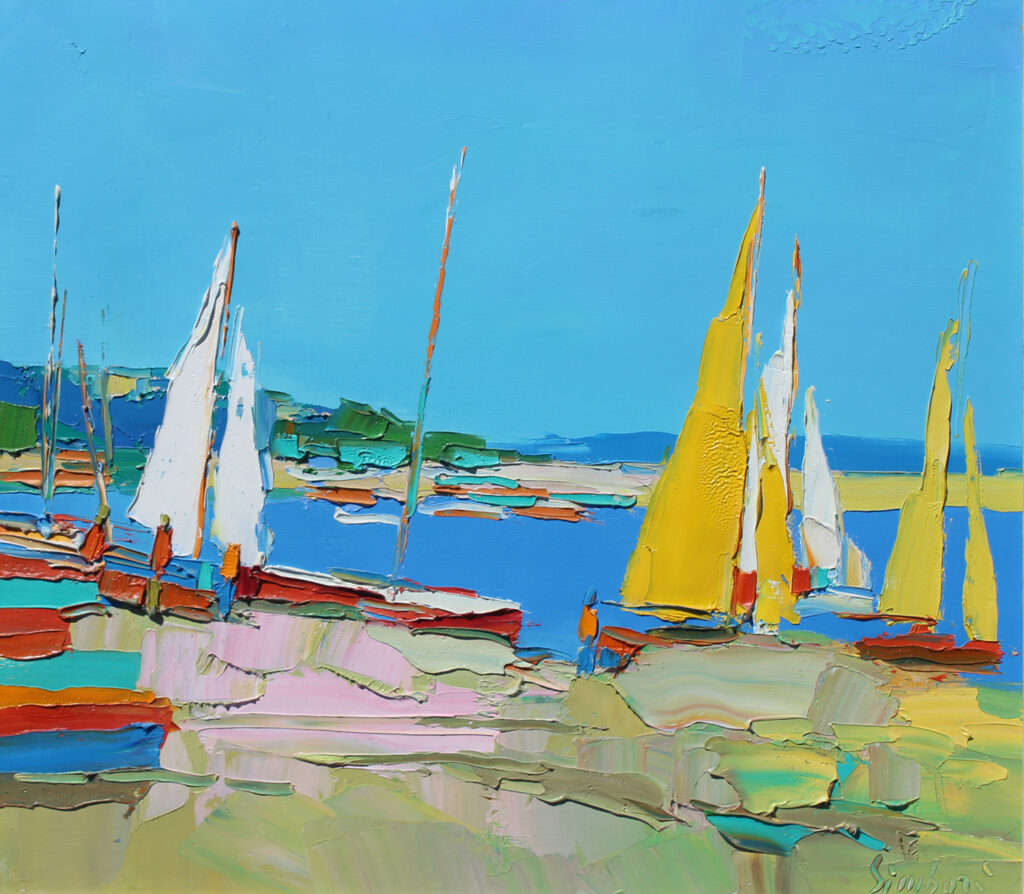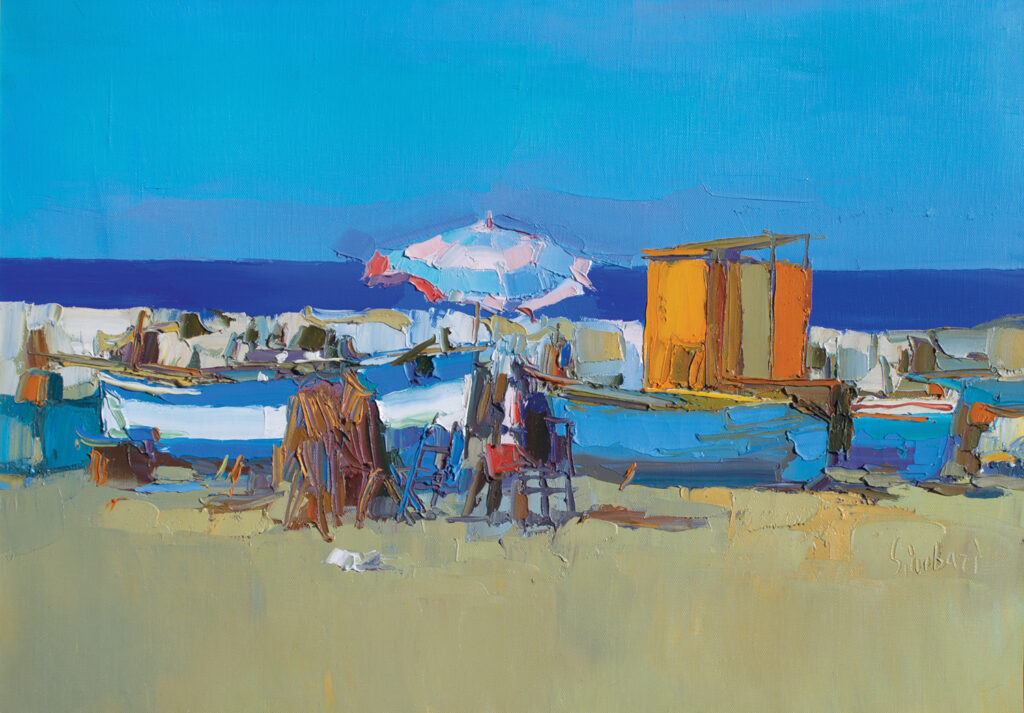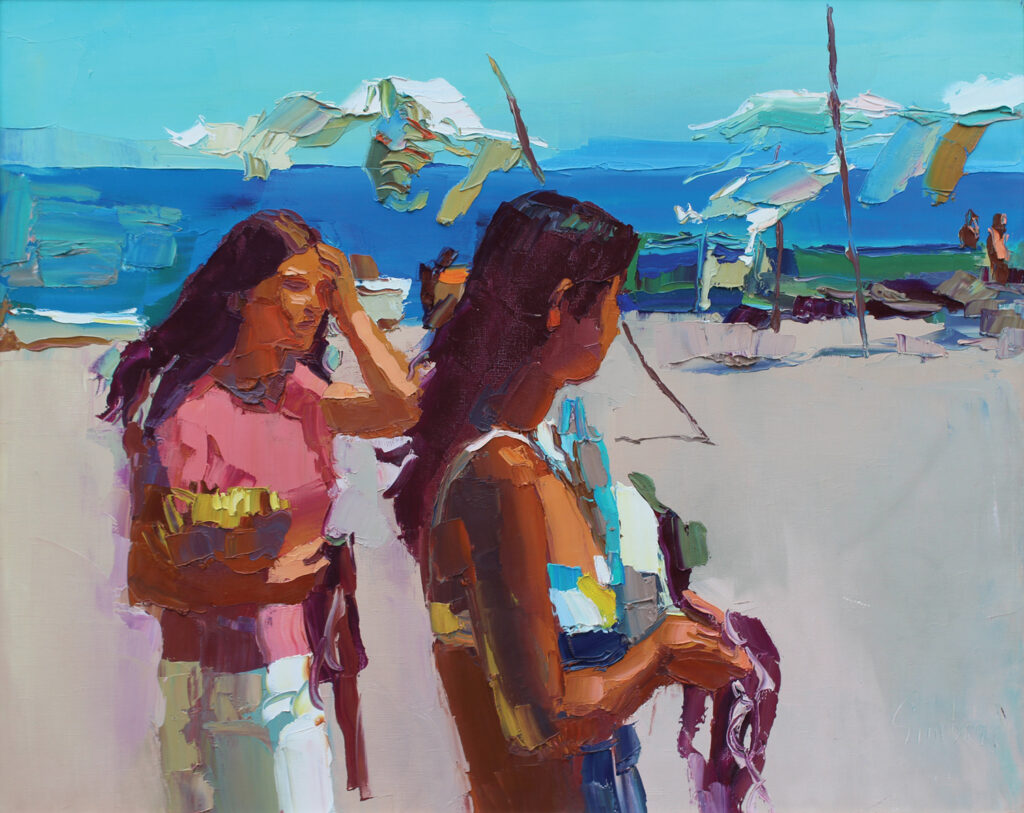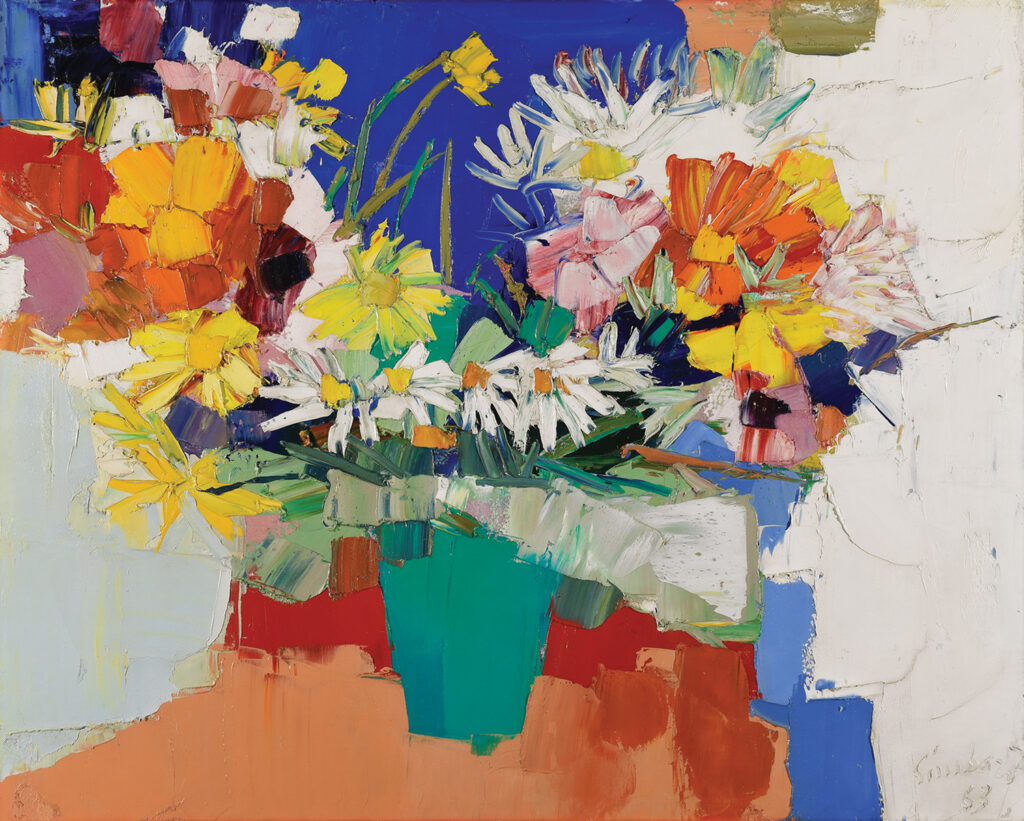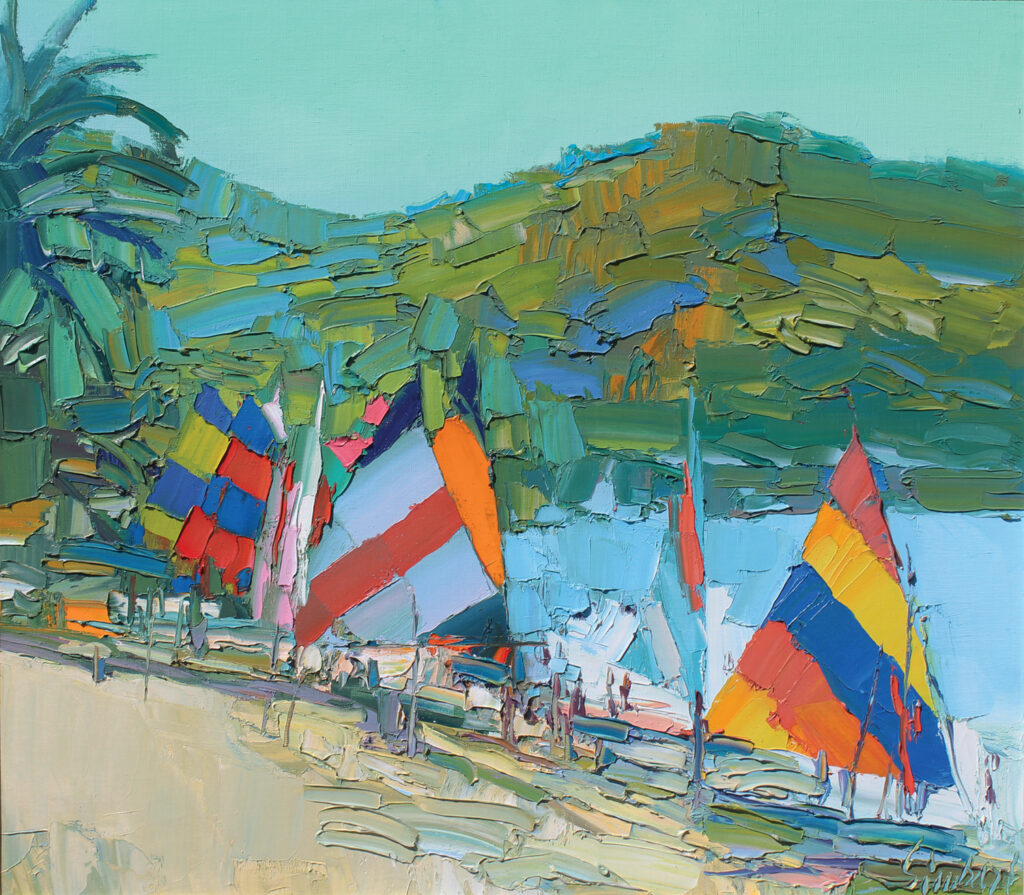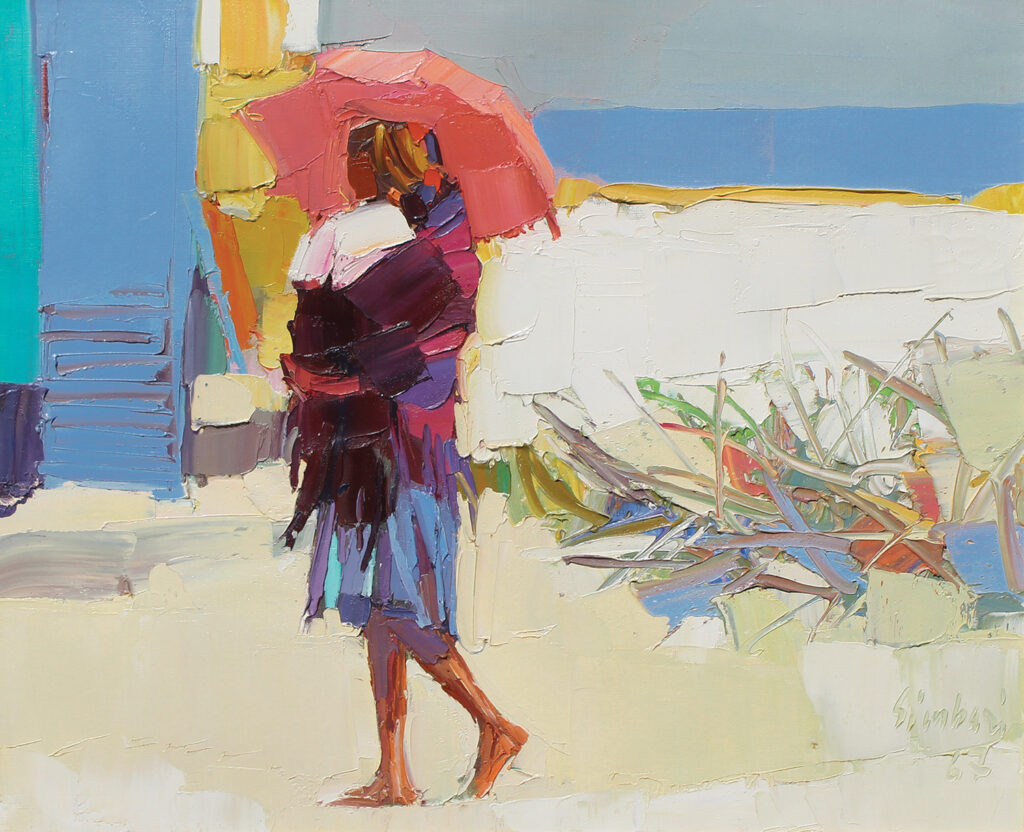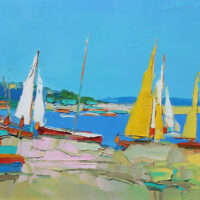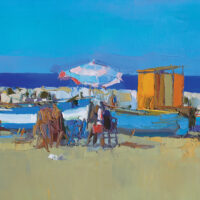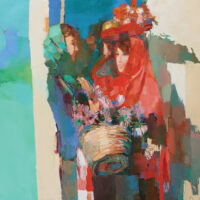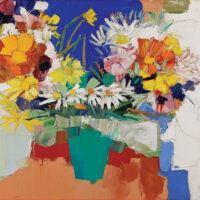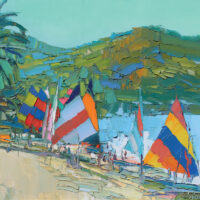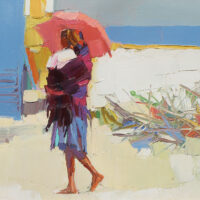Nicola Simbari
The Italian Palette Knife Master
In the United States Nicola Simbari’s work has become widely known through the frequent exhibitions presented by Wally Findlay Galleries.
He was born in San Lucido, a fishing village in Calabria, but when he was three years old his father moved the family to Rome, where he was employed as an architect and builder in the Vatican museums, and by the time he was seven he knew and loved the Michelangelo frescoes in the Sistine Chapel. The Sistine frescoes are a monumental blend of architecture and painting, and during the fours years Simbari spent at the Accademia delle Belle Arti in Rome, he studied both painting and architecture, excelling in the latter to such degree that he was made a member of the Accademia’s faculty in architecture. But painting was his real interest and soon he relinquished the post in order to concentrate on painting.
Simbari’s first one-man show of paintings was in Rome in 1953, and in that same year he won an award for best stage design for a musical, “Tarantella Napoletana,” produced in Rome. In 1954 the Italian State awarded him a gold medal for a poster entered in a national competition. Three years later, he had his first one-man show in London and in 1958 he won the coveted honor of being commissioned to paint the murals for the Italian Pavilion at the World’s Fair in Brussels.
Simbari gradually developed the style now recognized as Simbaresco, it is his own, and so is his technique in painting. He is meticulous and exacting in the choice of materials: he accepts only the finest canvas and prepares it with care; he has his colors ground by a family in northern Italy who have been engaged in this work for three hundred years; he mixes his own pigment. He is continuously developing new graduations of color or new colors and exults when he has succeeded in adding a more brilliant one to the range of his palette. When he uses a brush, it is only to create the background of the painting, which is then completed with palette knives of which he has about twenty-five sizes ranging from very tiny ones to huge ones. There are no superfluities in his paintings. Nothing could be removed from what he calls “the explosion” or “the action” without destroying the total impact of the painting. Light; dramatic quality; brilliant color — the three combine to produce the style called Simbaresco. He defines himself as a figurative artist who went through Abstract Expressionism, Geometric Abstraction, and a number of other styles of painting, but who has always been and still is a figurative painter because his greatest interest is in people.
Since his first one-man show in Rome in 1953, many important private collectors both in Europe and America have acquired Simbari’s paintings. They form part of the collection of the Virginia Museum of Fine Arts, the Liberty Company in London, and the Christian Dior Collection in France.

